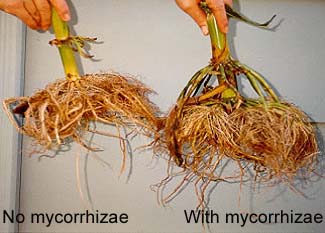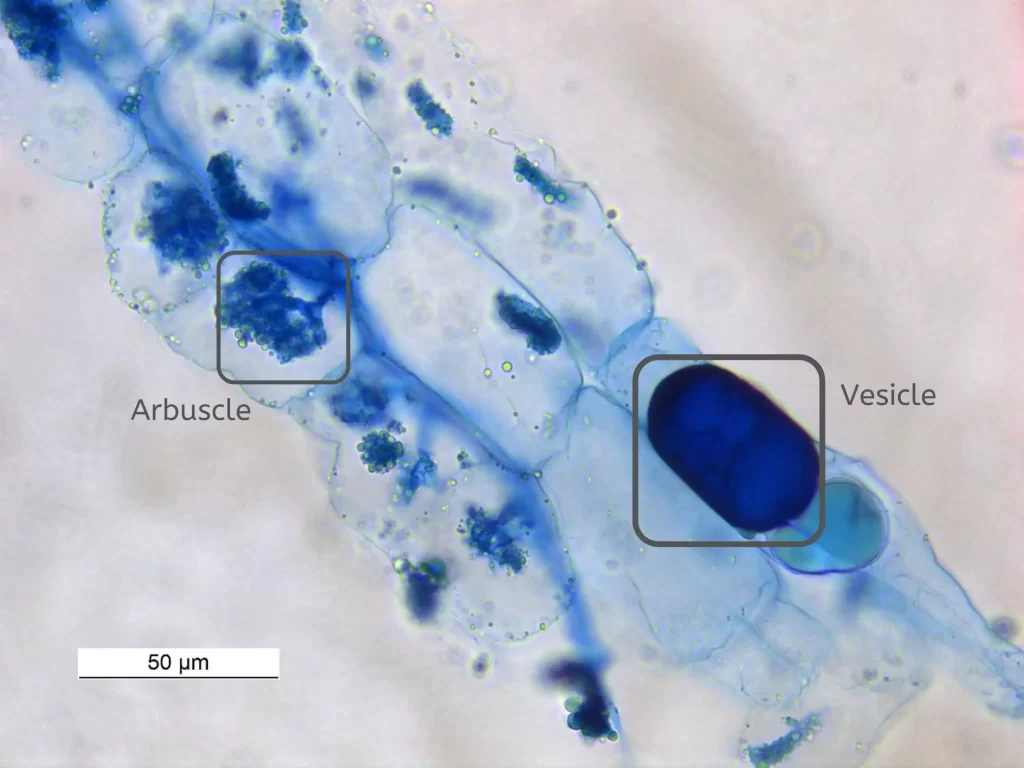Introduction to Vesicular Arbuscular Micorrhizae (VAM)
Deriving its name from the Greek words for “mushroom” and fungus, mycorrhiza has played a crucial role in agriculture as a biofertilizer. The adoption of biofertilizers is increasing year- by -year in an attempt to move away from the traditional use of fertilizers and their harmful effects.
Plant roots are in contact with underground mycellium in a mycorrhizal association, but the roots are not harmed by this association. Mycorrhizal fungi are among the first microorganisms developed.
Mycorrhiza is the mutualistic symbiosis (non-pathogenic association) between soil borne fungi with the roots of higher plants
Mycorrhiza can be classified into two types: ectomycorrhiza and endomycorrhiza.
Ectomycorrhizas have an extracellular fungal growth at the root cortex and are commonly found in temperate and boreal forest trees. In addition to tropical trees, ectomycorrhizal associations have also been found in pines and eucalyptus plants.
Endomycorrhizal fungi are characterized by inter- and intracellular fungal growth in root cortex, resulting in vesicles and arbuscles, respectively. Endomycorrhizas are also known as vesicular arbuscular mycorrhizas because of this characteristic growth. In plants, it is the most widely distributed association.
About 80% of all terrestrial plant species form this type of symbiosis ( vesicular arbuscular mycorrhizas )

The root systems of vascular plants are penetrated by the VAM fungus. The fungus then assists the roots and plant to absorb the nutrients from the soil. VAM increases the uptake of nutrients by the plant from the soil.
*Must read: Complete guide to Types of Fertilizers : Their Classification and Use (For information on nutrients in the soil)

It has a prominent characteristic structure called arbuscules, which are intercellularly formed and possibly are there for the absorptive function. The intercellularly formed terminal swelling of the hyphae are called vesicles, which are preset for storage purposes.
Mycorrhizal associations have been observed in the following six genera of Endogonaceae: Glomus, Gigaspora, Acaulospora, Entrophospora, Sclerocystis, and Scutellospora.
Benefits of VAM – Vesicular Arbuscular Micorrhizae

- Helps in producing vigorous and healthy plants.
- Increases the possibility of survival and establishment of the plant at the seeding or transplanting stage.
- It also improves the flowering and fruiting of fruits and vegetable plants.
- Helps in the production of better crop yield and better quality crops.
- It assists in improving drought tolerance which in turn helps in reducing the amount of water required for irrigation in water-stressed farm fields.
- It aids plants in making them more tolerant to stress factors such as alkalinity, mining operations toxicities, mineral imbalance and heavy metals.
- It has the potential of reducing the dependence on the present need for chemical fertilizers and be a good option as a biofertilizer, especially for areas with low soil fertility.
- To mine for water and dissolved minerals from the soil, VAM fungi add extensive networks of absorbing strands to the roots. It also helps in the expansion of the root system of the plant.
- In plant leaves, VAM fungi affect the opening and closing of pores for respiration known as stomates. Stomates close in drought-stressed plants to reduce water loss. These pores can be closed by VAM fungi, thereby allowing for more efficient water conservation.
- Plants are prevented from wilting by VAM fungi as it increases plant cell water pressure (turgor). Turgor supports cell function, allowing photosynthesis and growth to continue.
VAM biofertilizer
In order to enhance soil fertility, certain naturally occurring substances are mixed and applied to the soil. These are called bio fertilizers. Both soil health and plant growth and development benefit greatly from these fertilizers.
The benefits of AMF on soil health and crop productivity have been documented by various studies conducted over the past two decades. There is a growing perception that AMF may eventually replace inorganic fertilizers. In mycorrhizal systems, chemical fertilizer input can be reduced, particularly that of phosphorus.


